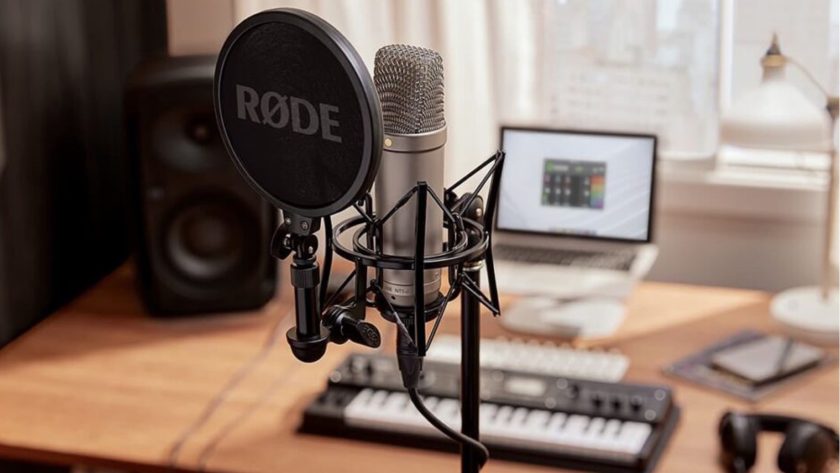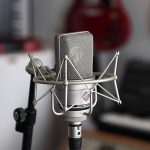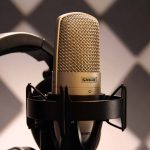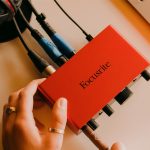In this review, we feature the best USB microphones for vocals that are very easy to setup and are essentially “plug and play” mics. These microphones connect directly to your computer and DAW through USB, and do not require an additional audio interface which helps you to save cost and time in your recording setup. They come with a built-in audio interface and preamp inside the microphone itself which powers the microphone with proper gain staging. Some of these microphones deliver silky smooth vocals with very low self-noise and high SPL handling, making them great for capturing soft to loud vocals and subtle nuances in your voice.
You might be wondering…
Do USB Microphones require an Audio Interface?
The key advantage of USB microphones is that they do not require an audio interface to supply phantom power as USB mics come with built-in preamps. They are designed to be “plug and play” and all you need to do is to plug in the microphone’s USB output into your computer and link it with your DAW. Most audio interfaces only support XLR input connections and a USB mic will not be able to connect to an audio interface. Having said that, some USB microphones such as the RODE NT1 5th Generation supports both XLR and USB outputs, and you can connect them directly to your computer or audio interface (if you want extra gain or to adjust the EQ and tonal depth of your microphone).
If you are thinking of getting a USB microphone, one consideration would be to get a hybrid microphone that supports both XLR and USB outputs so that you can switch between your PC or audio interface connection when required. This will give you more customization options to tune the sound performance of your microphone.
Here are some of the best USB microphones for vocals that I recommend…
1. RØDE NT1 5th Generation Microphone
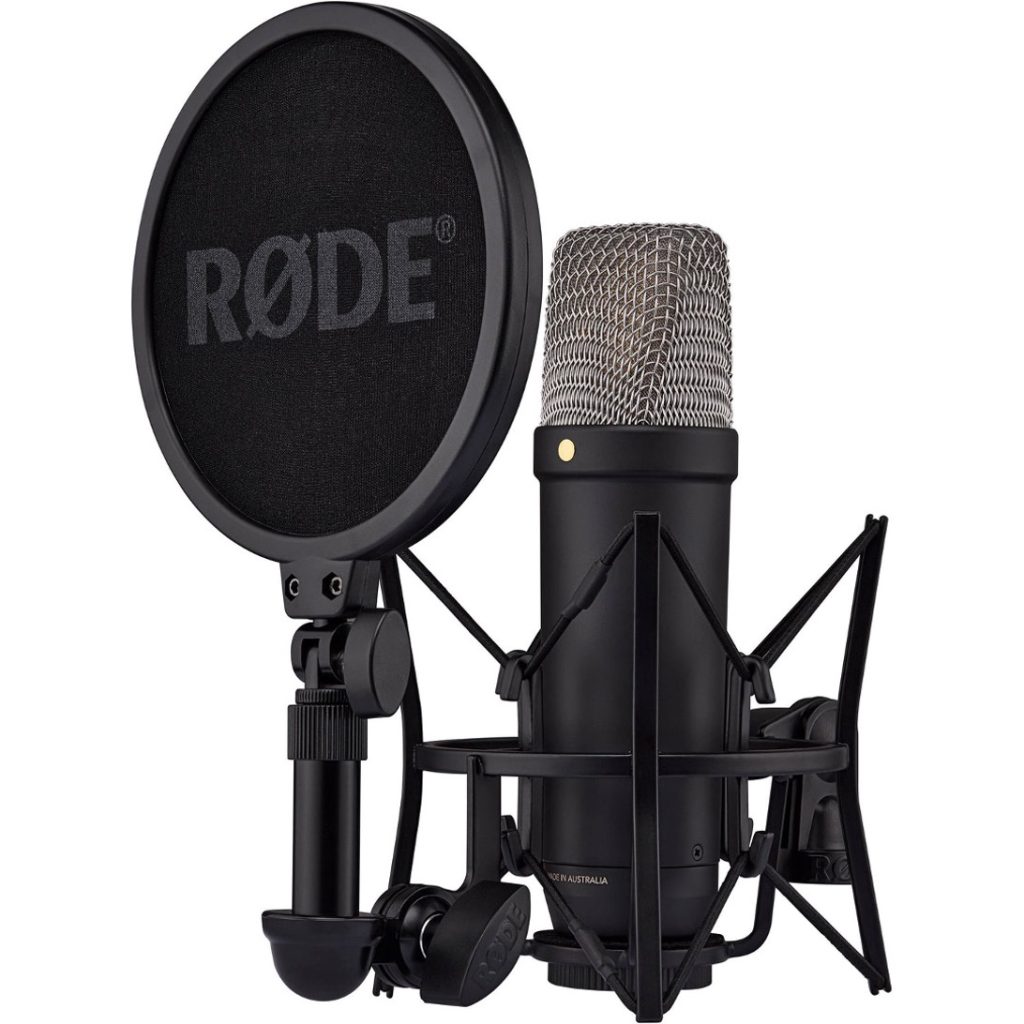
The RØDE NT1 5th Generation large-diaphragm studio condenser is one of the best USB microphones for vocals currently available which delivers superb sound performance. This microphone is designed with a large-diaphragm cardioid condenser and features an HF6 1-inch true condenser capsule. This microphone has a smooth frequency response and high sensitivity, making it capable of handling high sound pressure levels (SPL). Furthermore, it has an exceptionally low self-noise level of 4dBA, which is considered to be the quietest among studio condenser microphones. The microphone also includes RØDE’s patent-pending Dual Connect output, offering both XLR and USB connectivity, making it easy to setup with your computer (using USB) or audio interface.
In terms of sound performance, the RØDE NT1 5th Generation maintains the warm, silky character that the original NT1 is known for, while integrating improved circuitry for even lower self-noise. This makes it really good for capturing subtle nuances in vocals and recording voiceovers and guitars or even drums. I really like how silky smooth the sound on the NT1 5th Generation microphone is – it has a wide frequency response and can capture all the details in your vocals with pristine clarity with natural sounding quality.
Compared to other USB microphones, the RØDE NT1 5th Generation stands out for its unique blend of traditional studio microphone qualities with cutting-edge features that deliver exceptional sound performance. It really does feel like a high-end microphone with a hint of vintage warmth while using the USB connection. Unlike many USB microphones that are primarily designed for simplicity and ease of use, the NT1 5th Generation offers a level of versatility and sound quality that is on par with professional studio microphones. Its dual connectivity (XLR and USB) and 32-bit float digital output set it apart from competitors, allowing it to be used in a wider array of recording environments from home studios to professional settings.
In fact, the RODE NT1 is often compared to the Neumann TLM 102 which is another high-end microphone. While the TLM 102 is renowned for its slightly boosted presence in the higher frequencies, which lends brilliance to vocal recordings, the RØDE NT1 5th Generation offers a more balanced frequency response, maintaining warmth without over-emphasizing any particular range. Both microphones have low self-noise, but the NT1 5th Generation’s exceptionally low noise of 4dBA positions it as one of the quietest studio condensers available.
I highly recommend the RØDE NT1 5th Generation microphone for recording vocals – you simply cannot go wrong with this USB microphone. It delivers classic sound quality, low noise, and versatile connectivity options including both USB and XLR which is really beneficial if you want to make use of an audio interface in the future. Its advanced features like the ultra-high-resolution analog-to-digital conversion, on-board DSP for APHEX audio processing, and a studio-grade shock mount and pop filter make it an all-in-one digital recording solution. These attributes make the NT1 5th Generation an excellent choice for those looking to capture high-quality vocal recordings in a home or professional recording studio.
2. Shure MV7 USB Microphone
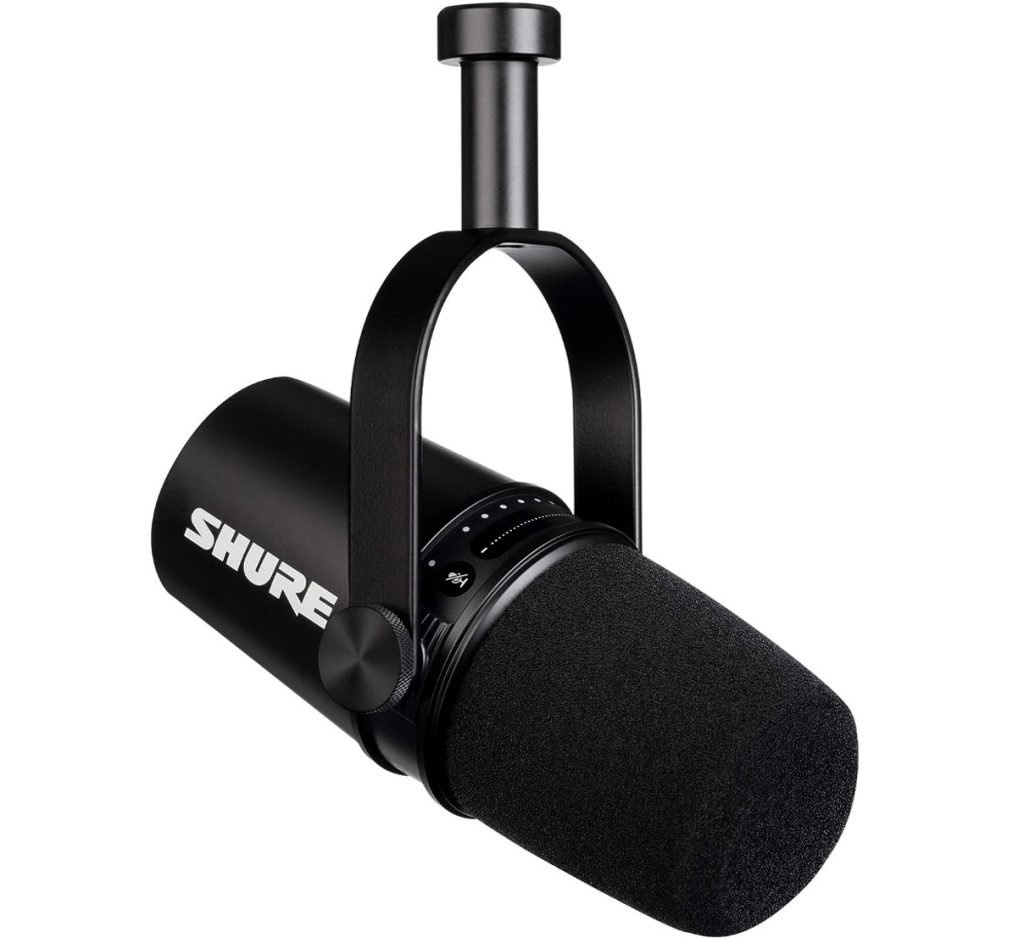
The Shure MV7 USB Microphone is a dynamic microphone with a USB/XLR dual output and is one of the best USB microphones for vocals and podcasting. It features intuitive touch panel controls for gain, monitoring volume, headphone mix, and mic muting, along with a built-in headphone output for direct monitoring. The microphone is optimized for rich and natural vocal reproduction and includes the ShurePlus MOTIV Desktop Application for audio processing and EQ filter adjustments. The MV7’s all-metal construction and flexible placement options, including an adjustable integrated yoke, enhance its durability and versatility.
I really like the sound performance of the Shure MV7 USB microphone. The Shure MV7 delivers clear and articulate vocal reproduction with minimal distortion and background noise, and can capture subtle nuances in your vocals and make them sound much more engaging. The MV7 has a reputation in the recording industry for recording vocals and live streaming with an optimized frequency response that delivers natural vocal reproduction.
When compared to other USB microphones like the Rode NT-USB Mini, the Shure MV7 stands out for its superior voice isolation and lower room sound pickup. The Rode NT-USB Mini tends to capture more room sound and higher frequencies while the Shure MV7 has a more isolated sound pickup. The MV7, with its dynamic microphone characteristics, provides a more focused and controlled sound making it preferable for environments with less than ideal acoustics. This means that the Shure MV7 USB Mic is a great choice for recording vocals at home.
Overall, the Shure MV7 USB microphone is one of the best microphones you can get for recording vocals in a home recording studio setting. This microphone delivers exceptionally clear and pristine vocals, and can capture subtle nuances in your voice and also filter out environmental sounds due to its dynamic microphone setup. Its ability to connect via both USB and XLR makes it highly versatile for either casual or professional recording use, and its sound quality is great for professional-grade vocal recordings. The microphone also comes with touch panel controls and the ShurePlus MOTIV app which allows you to adjust the sound performance and EQ while recording, making it an ideal USB microphone for vocals and live streaming.
3. RØDE PodMic USB Microphone
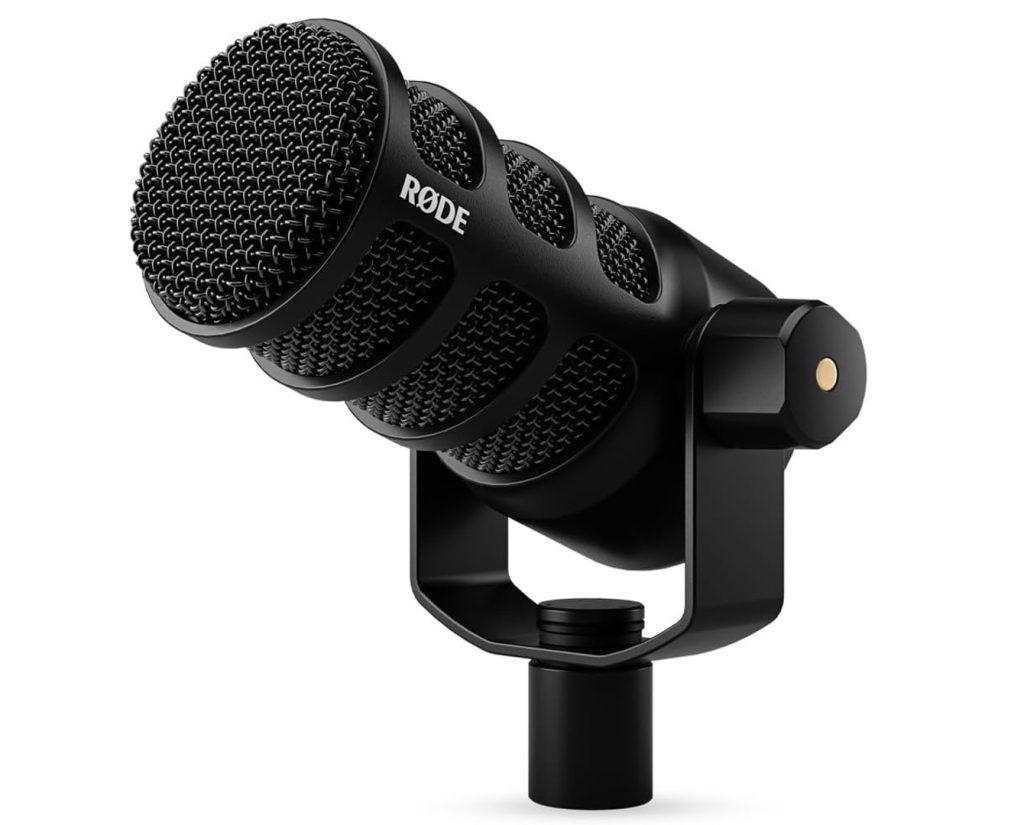
The RØDE PodMic is a dynamic broadcast-quality USB microphone optimized for podcasting and streaming. It features both XLR and USB-C connectivity, making it versatile for use with traditional audio interfaces and mixers as well as directly with computers. The microphone provides rich and balanced sound for vocals, including broadcast and voice-overs. With its internal DSP and effects accessible via the RØDE Central companion app, you can also unlock features like the APHEX Aural Exciter and Big Bottom processors. The integrated headphone port on the USB version allows for zero-latency monitoring and comes with a dedicated volume slider.
In terms of sound performance, the PodMic USB microphone delivers a full and rich tone, surpassing typical expectations from built-in USB mic preamps. While vocals may sound initially bland, you can allow vocals to gain more character with the additional DSP processing from the RØDE Central app. The microphone responds well to the Aphex treatment, enhancing lows and highs for a more vibrant sound. However, a higher HPF option and a De-esser would be beneficial additions for reducing plosives and sibilance. I really like how the PodMic makes your voice sound natural and engaging at any volume level.
The PodMic USB’s versatility in connectivity (USB and XLR) and the quality of its built-in preamp make it really good for recording vocals. This microphone features a heavy-duty build and effective pop filter that helps to reduce plosive sound pickup during recording sessions. Compared to the Shure MV7, the PodMic USB offers a richer tone without the cardboard-like flatness found in some USB mics. It also includes a robust DSP suite with Aphex processing for enhanced sound which helps you to customize the sound profile on the go. Against the Rode NT-USB Mini, the PodMic USB’s heavy build and effective pop filter provide a more professional setup, and its dual USB/XLR connectivity offers more versatility if you want to switch between audio interface or computer.
I highly recommend the RØDE PodMic USB microphone for vocals due to its superb sound performance and versatile XLR and USB-C connectivity. The microphone is compatible with both audio interfaces and mixers or can be connected directly to your computer for a plug and play setup. Furthermore, this microphone comes with internal DSP and effects which allow you to customize the sound profile through the RODE central companion app on the go. When used as a USB microphone, the integrated headphone port can also be used for zero-latency monitoring with a dedicated volume slider. Overall, the RØDE PodMic is one of the best USB microphones for recording vocals and we highly recommend them.
4. Blue Yeti USB Microphone
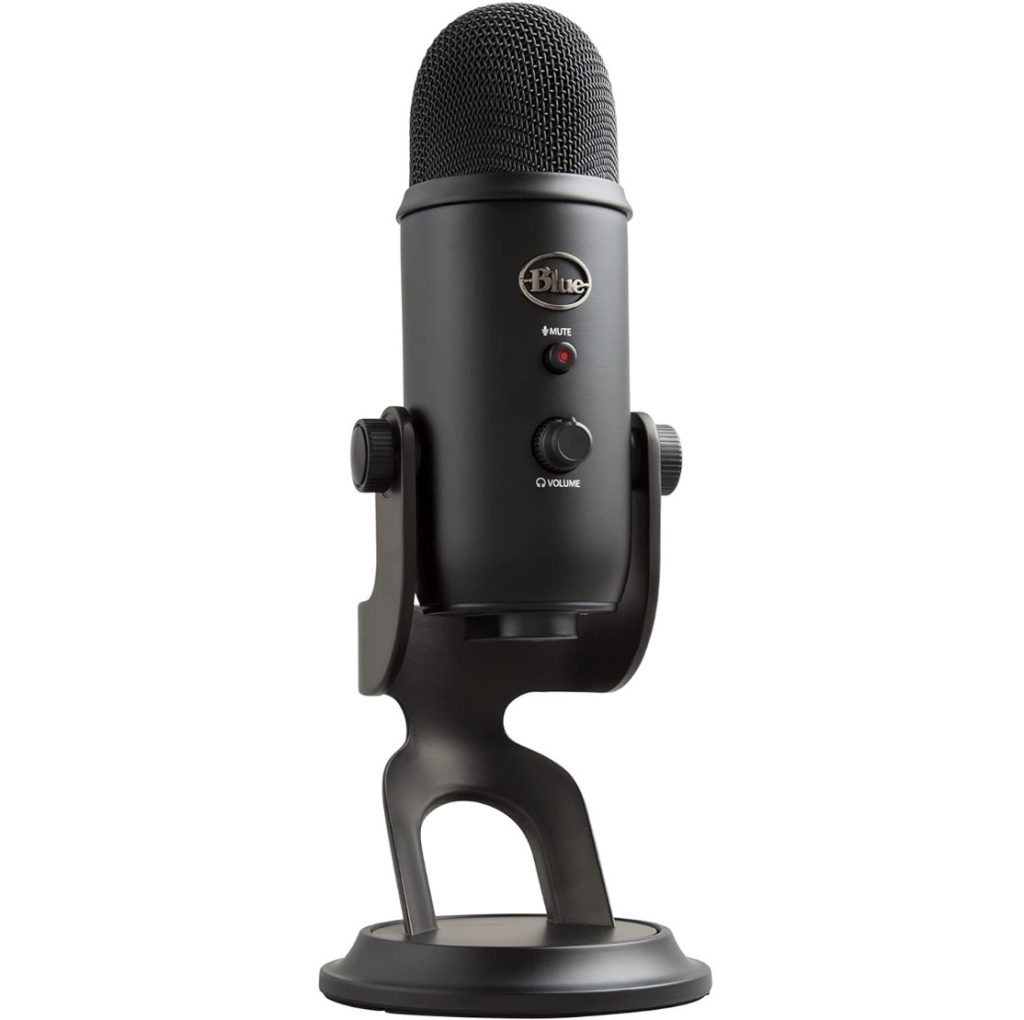
The Blue Yeti USB Microphone is an extremely popular microphone for streaming and podcasting and delivers crystal clear vocals. This microphone features a three-condenser capsule array and provides four different polar patterns: cardioid, bidirectional, omnidirectional, and stereo. This range of patterns allows for a variety of recording situations, whether it’s solo work or recordings involving multiple sound sources. The Blue Yeti is designed with a frequency response of 20Hz – 20kHz, making it great for streaming, podcasting, and voice-over work. It also has a maximum sound pressure level of 120 dB and a total harmonic distortion (THD) of 0.5%, with a maximum sampling rate and bit depth typical for streaming microphones at 48 kHz/16 bit.
In terms of sound performance, the Blue Yeti delivers clear and detailed sound due to its highly sensitive internal condenser capsules. It can pick up subtle background noises, which highlights its capability to capture a wide range of sounds. However, this sensitivity means it can also pick up unwanted noise if not properly filtered (you might want to get a dedicated pop filter for this mic). The microphone features a sturdy build and comes in a variety of colors to choose from. It also includes a mini-USB port and a 3.5mm audio jack for headphones. The front-facing volume knob controls the headphone output level, while a rear-facing gain knob adjusts the microphone’s sensitivity. The pattern selector switch allows easy switching between the four polar patterns and makes it convenient for adjusting the pickup pattern while recording.
When compared to other USB microphones, the Blue Yeti stands out for its versatility in its adjustable pickup patterns and ease of use. It’s a user-friendly option for new podcasters and streamers, offering plug-and-play compatibility with Windows and MacOS systems. The Yeti’s design allows it to be mounted on standard microphone stands or boom arms for greater flexibility. While it doesn’t have the highest audio resolution in the market (at 16-bit/48kHz audio resolution), it’s still a solid choice for most streaming and recording vocals.
Overall, the Blue Yeti USB microphone is a really versatile microphone designed to record crystal clear vocals and comes with a custom three-capsule array. This microphone is built for creating YouTube videos, Twitch game streaming, podcasting and creating clean music recordings. Its direct headphone monitoring feature is particularly useful for eliminating latency during recording. Furthermore, the Blue Yeti also comes with onboard audio controls which allow you to adjust the pattern selection, instant mute or mic gain at a touch of a button. It is essentially “plug and play” and all you need to do is to plug in the microphone to your computer via USB and instantly start recording.
5. Elgato Wave:3 USB Microphone
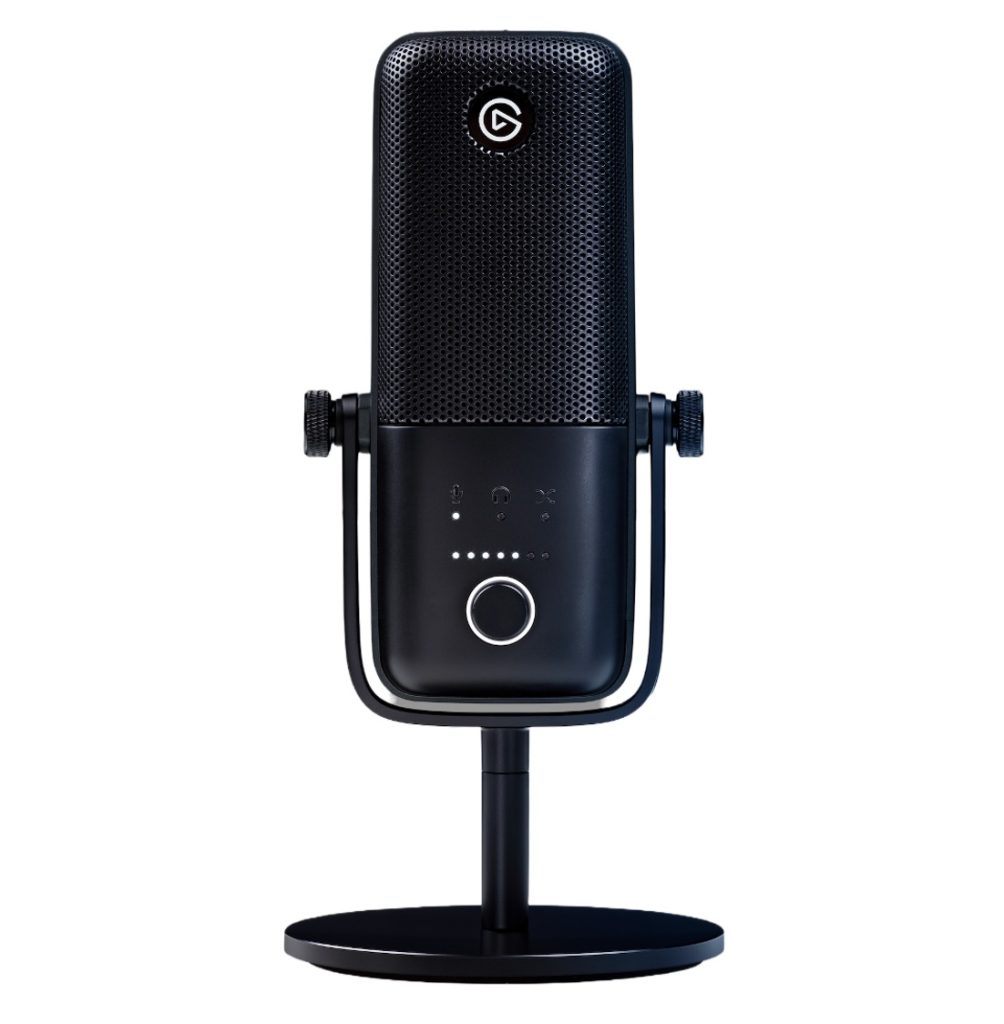
The Elgato Wave:3 is a USB condenser microphone designed with a 17 mm electret capsule and a cardioid polar pattern which delivers crystal clear vocal performance. It delivers a high resolution of 24-bit with a sample rate of 48/96 kHz and provides professional-grade sound quality. The frequency response ranges from 70 Hz to 20 kHz, while it has a sensitivity span from -25dBFS (min gain) to 15dBFS (max gain). The Wave:3 microphone has a maximum SPL of 120dB, which can be extended to 140dB when its proprietary Clipguard technology. This technology prevents audio distortion, enhancing the microphone’s performance in any recording studio setup.
I really like the sound quality of the Elgato Wave:3 USB microphone. The Wave:3 delivers clear and detailed speech capture, making it suitable for podcasting, streaming, and vocal recording. The 24-bit/96kHz analog-to-digital converter ensures that the audio quality is maintained throughout the recording process. The dynamic range of 95dB (extendable to 115dB with Clipguard) contributes to capturing a wide range of sounds without loss of quality and distortion. This USB microphone is particularly good at capturing loud vocals and does not produce any distortion; it delivers consistently clean and crisp audio performance.
Compared to other USB microphones, the Wave:3 stands out for its unique Clipguard technology which makes distortion virtually impossible when recording louder vocals. The microphone is features a proprietary circuitry which provides seamless sonic transmission throughout the entire signal chain without any distortion. Additionally, the Wave:3 supports easy integration with the Wave Link App, allowing control of up to nine audio sources and creation of two independent mixes during recording sessions.
Overall, the Elgato Wave:3 is a really good USB microphone for recording vocals on a budget and is very easy to setup. It comes with a cardioid condenser capsule which captures vocals with great clarity and detail, and also features the Wave Link App which gives you more customization options as compared to other USB microphones. Furthermore, the Wave 3 microphone comes equipped with a 24-bit/96kHz Analog-to-Digital Converter for crystal clear sound amplification and Clipguard Technology to prevent distortion. If you are looking to get a budget USB microphone for recording vocals, I highly recommend the Elgato Wave:3.
6. Audio-Technica AT2020USB+
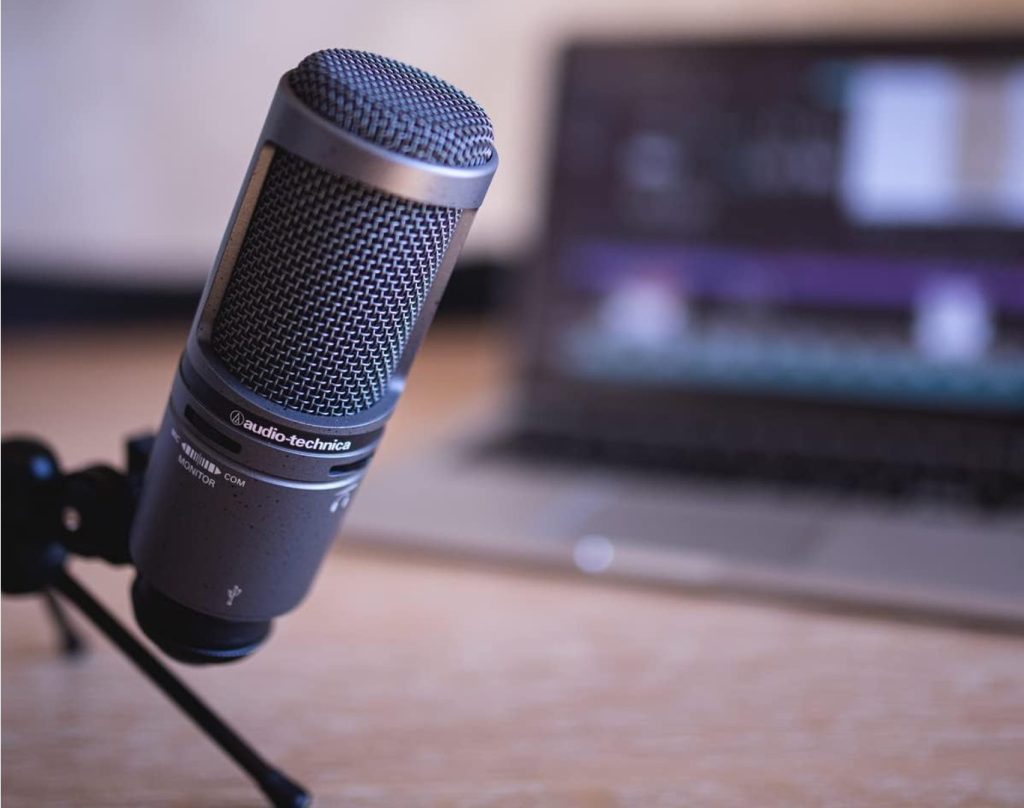
The Audio-Technica AT2020USB+ is a versatile condenser microphone equipped with a USB output for digital recording. It features a high-quality A/D converter with a 16-bit depth and a sampling rate of 44.1/48 kilohertz for superb audio fidelity. The microphone is designed with a cardioid polar pattern to isolate the sound source and reducing background noise, making it ideal for home studio recording and podcasting.
Sound performance-wise, the AT2020USB+ delivers crisp, clear audio with a well-balanced frequency response. This microphone delivers crystal clear vocals with really crisp highs, making your voice sound much more engaging and natural. I like the fact that the AT2020USB+ comes with a built-in headphone jack with volume control for real-time monitoring with no latency. It also comes equipped with a mix control which allows you to blend your microphone signal and pre-recorded audio to create a new track.
When compared to other USB microphones like the Blue Yeti, the AT2020USB+ stands out for its superior audio clarity and minimal noise. The Blue Yeti offers versatility with its multi-pattern selection (Cardioid, Bidirectional, Omnidirectional, Stereo) and plug-and-play operation, but it can be sensitive to background noise and is slightly bulkier. Comparatively, the Rode NT-USB offers a full-bodied sound profile and an in-built pop filter, but like the AT2020USB+, it is limited to a cardioid pickup pattern and has a similar resolution. The Audio-Technica AT2020USB+ is compatible with a wide range of operating systems, including Windows 7, Vista, XP, 2000, and Mac OS X running DAW software.
Overall, the Audio-Technica AT2020USB+ is a really good USB microphone for recording vocals as it comes with a built-in DAC and delivers crystal clear vocal performance. The cardioid pattern effectively captures vocal nuances while minimizing unwanted background noise. The ability to monitor and mix in real-time with the integrated headphone output and mix control further adds to its suitability for vocal recording in a home recording studio setting. It’s a highly versatile microphone that also comes with an internal headphone amp for audio monitoring during long recording sessions.
7. HyperX QuadCast S USB Microphone
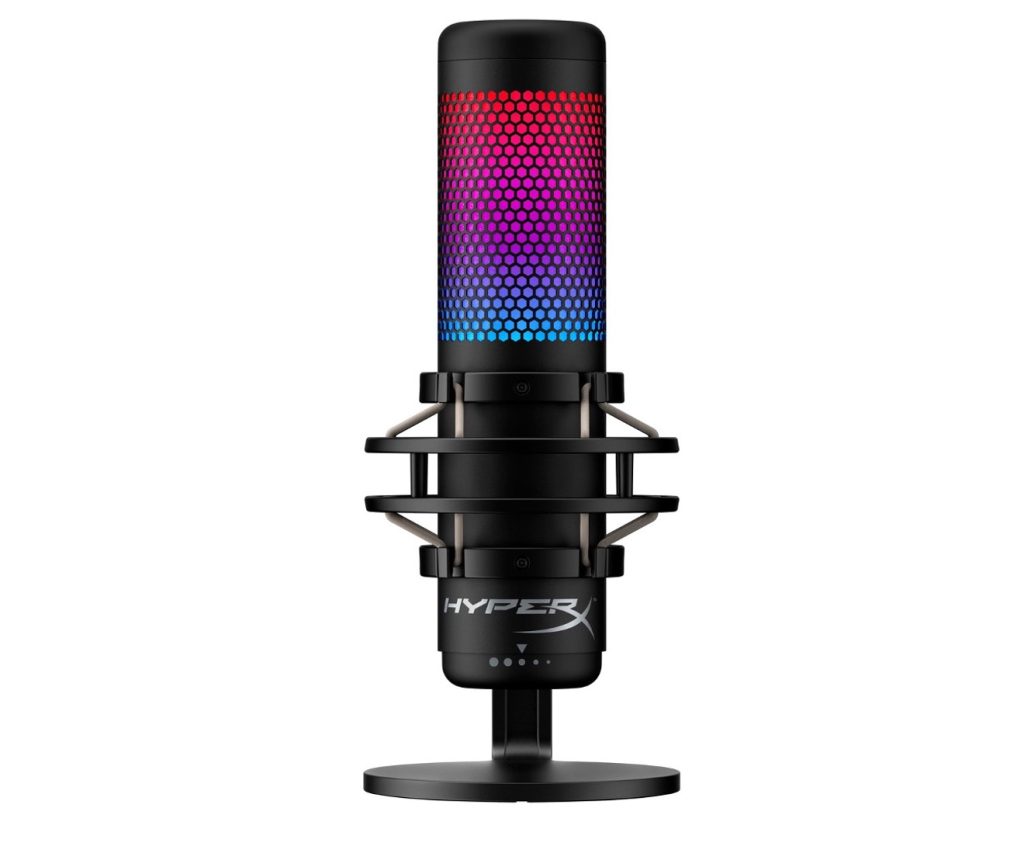
The HyperX QuadCast S is a visually stunning USB condenser microphone that comes with customizable RGB lighting and is fully controllable via HyperX Ngenuity Software. It features a built-in anti-vibration shock mount to reduce unwanted noise and vibrations. The microphone is equipped with a tap-to-mute sensor, allowing quick muting and an LED status indicator showing the microphone’s active or muted status. The HyperX QuadCast S has a frequency response of 20Hz – 20kHz and the sensitivity is adjustable via the gain control dial at the bottom of the QuadCast.
In terms of technical specifications, the QuadCast S offers four selectable polar patterns: stereo, omnidirectional, cardioid, and bidirectional. This makes the QuadCast S one of the more versatile USB microphones you can get with adjustable polar patterns. Additionally, the microphone has a gain control adjustment for fine-tuning mic sensitivity, a mount adapter fitting most mic stands or boom arms, an internal pop filter to reduce plosives and a headphone jack for live audio monitoring.
I really like the sound quality of the HyperX QuadCast S USB microphone. Vocals sound clean and crisp and the microphone can record loud vocals without any distortion. The microphone also comes with a mount adapter and pop filter which helps to reduce any plosive sound pickup and delivers clean sound performance without any distortion.
Compared to other USB microphones, the HyperX QuadCast S stands out with its customizable aesthetic and multiple polar pattern options. It is certified by Discord and TeamSpeak and works seamlessly with streaming platforms like Streamlabs OBS, OBS Studio, and XSplit, making it particularly good for gamers and streamers. The JLab Talk PRO is a good alternative for those looking for an aesthetic and professional USB microphone that costs less than the QuadCast series. However, the HyperX QuadCast S offers better sound quality and more features, such as the built-in anti-vibration shock mount and tap-to-mute sensor with LED status indicator.
Overall, the HyperX QuadCast S is a solid USB microphone for recording vocals and is designed for gaming, podcasting, or live streaming. The microphone looks very stunning with its RGB lighting and comes with 4 selectable polar patterns which allows you to optimize your broadcast setup depending on your environment. You can also further customize the RGB lighting and effects with the HyperX Ngenuity software, and adjust your mic sensitivity using the dial at the bottom of the QuadCast microphone. It’s a highly versatile mic that looks really aesthetic and delivers crystal clear vocal recordings.
8. Sennheiser Professional Profile USB Microphone

The Sennheiser Professional Profile USB Condenser Microphone is a plug and play USB microphone designed for simplicity and sound performance. This microphone has a wide frequency range of 20 to 20 kHz and a sample rate of 44.1 and 48 kHz and is capable of capturing subtle details in vocal recordings. Furthermore, the microphone is compatible with a variety of devices including Windows, Android, iPadOS, and MacOS systems. Its cardioid polar pattern is ideal for focusing on sound sources directly in front of the microphone, making it suitable for podcasting and live streaming. The microphone is very easy to setup and connects via USB-C, making it one of the best USB microphones designed to capture crystal clear vocals.
I really like the sound quality of the Sennheiser Professional Profile USB microphone. The Sennheiser Profile USB features a warm, full-bodied response which makes vocals sound particularly bright and engaging. This natural and slightly bright sound can be attributed to the German-engineered KE 10 capsule, which is derived from Sennheiser’s experience in condenser microphone design. The Profile’s design provides a warm and slightly boosted high-mid frequency response, with a smooth roll-off in the highs and lows, capturing all the detail and natural sound of your voice.
When compared to other USB microphones such as the Blue Yeti and the Elgato Wave:3, the Sennheiser Profile stands out due to its simplicity and focus on quality sound capture without the need for additional software. The Profile mic is limited to a cardioid audio pattern and does not offer a range of pickup patterns. This makes it less versatile in certain recording situations, but highly effective for solo vocal recordings. Having said that, the Blue Yeti USB mic offers four polar patterns which makes it a more versatile mic as compared to the Sennheiser Professional Profile.
If you are looking for an easy plug-and-play USB microphone to record vocals, the Sennheiser Professional Profile comes highly recommended. The Profile mic delivers a natural and warm sound signature that accentuates the body and presence of your voice, making it sound more engaging and lifelike. It also comes with the ability to control vocal performances with the twist of a dial and it comes with a table stand for compact convenience.
9. FIFINE XLR/USB Dynamic Microphone
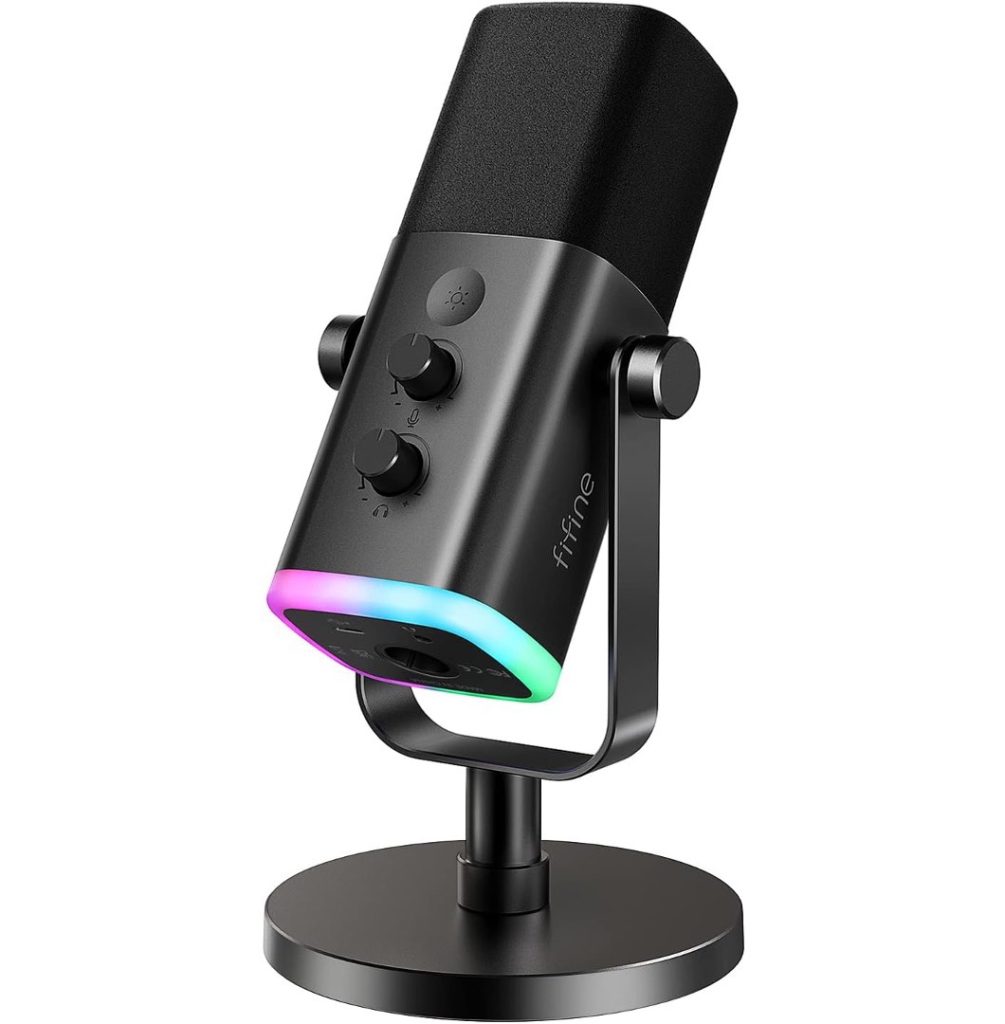
The FIFINE XLR/USB Dynamic Microphone is a versatile and really good USB microphone that provides natural sound clarity. It has a wide frequency response of 50Hz-16KHz and features a cardioid dynamic polar pattern with a balanced audio range. This pattern ensures that the microphone captures sound from the front while minimizing unwanted off-axis noise, making it great for recording vocals without capturing background sounds. The microphone is designed to capture natural audio clarity especially during gaming streaming and video recording.
In terms of sound performance, the FIFINE microphone delivers clean and high-quality audio while capturing all the details in your voice. The upper end of the sound spectrum is slightly boosted, providing a crisp and broadcast-like audio quality, while the low end isn’t overly emphasized – the sound profiles feels pretty balanced. This makes the microphone suitable for those with deep voices or those who prefer to use the proximity effect. However, it should be noted that the microphone is not the best at reducing plosives, so using a pop filter is recommended. The microphone is also sensitive to keyboard noise, which might be a consideration for gamers (we would recommend recording at least 4-6 inches away from the audio source). The build quality is sturdy and this microphone features an all-metal body and grill.
Compared to the Blue Yeti USB mic, the FIFINE K688 stands out due to its dual XLR/USB connection. While the Blue Yeti offers multiple polar patterns and is known for its versatility in various recording situations, the FIFINE K688’s cardioid dynamic design is specifically tailored for vocal clarity and rejection of off-axis noise. This makes the FIFINE K688 particularly effective for solo vocal recordings, podcasting, and streaming in untreated rooms, where it can minimize background noise more effectively than some of its competitors
I highly recommend the FIFINE XLR/USB Dynamic Microphone for recording vocals due to its natural audio clarity and balanced frequency response, which accurately capture the nuances in vocals. Its versatility with both XLR and USB connections allows integration into various recording setups, making it a suitable choice for podcasting, PC gaming, streaming, and singing – it delivers a really clean vocal recording without any distortion. The inclusion of a headphone jack for real-time monitoring and a smooth mic gain knob makes it a very convenient microphone to use. Additionally, its RGB lighting and multiple function keys make this microphone both functional and aesthetically pleasing.
10. Samson Meteor USB Microphone
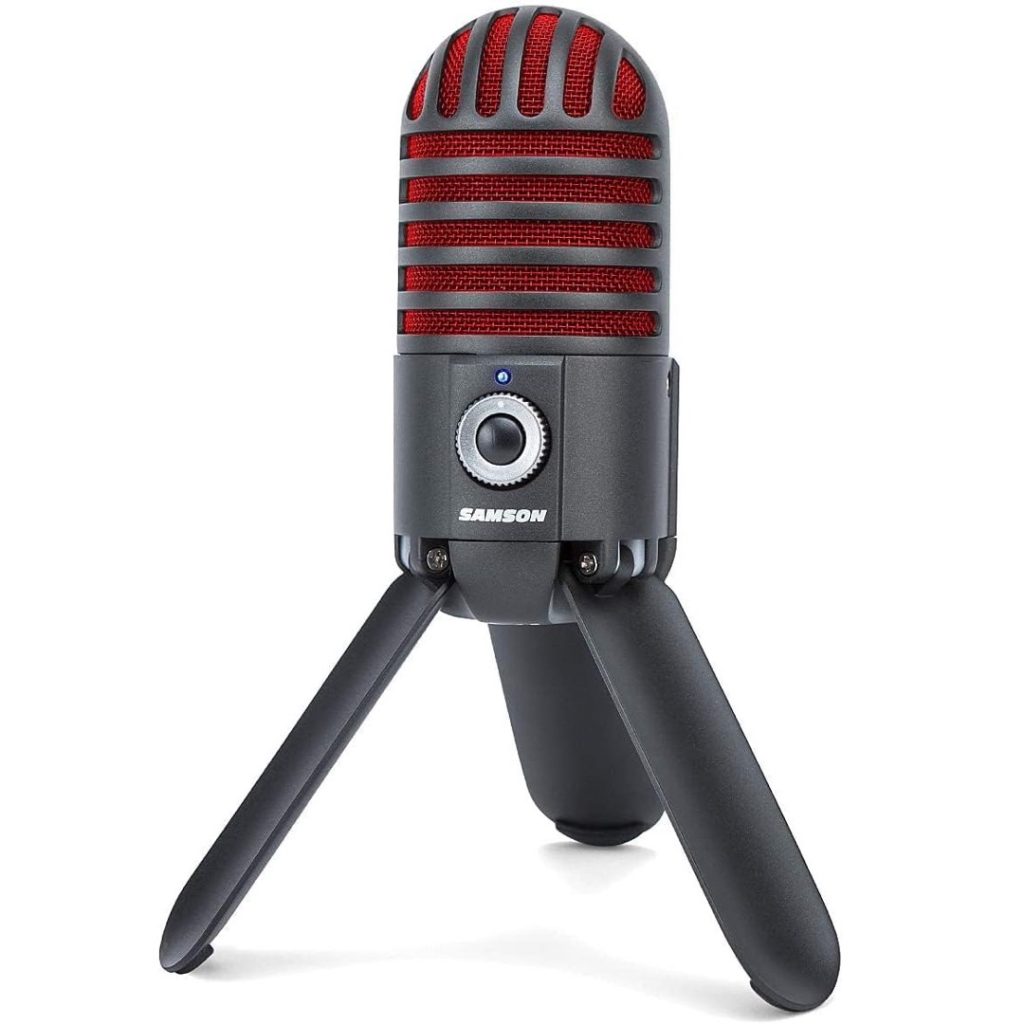
The Samson Meteor Mic USB Studio Microphone is a compact and good USB microphone for recording vocals and podcasts. It features a large 25mm diaphragm and offers a smooth flat frequency response of 20 Hz-20 kHz, along with a 16-bit 44.1/48kHz resolution for professional audio quality. This microphone is compatible with devices like Mac, Logic, Garage Band, iPad, iChat, etc., and its cardioid pickup pattern helps in reducing the pickup of unwanted sounds from the sides and rear, focusing on the sound in front of the microphone. The microphone works straight out of the box and is suitable for desktop recording.
In terms of sound performance, the Samson Meteor Mic delivers crisp and clear vocals and it is also capable of handling the recording of acoustic guitars effectively. However, it does tend to pick up some background noise and may require a pop filter for better sound quality, especially for close-up vocal recordings. Its plug-and-play feature makes it very easy to use without the need for additional drivers, making it convenient for quick setups.
I really like the Samson Meteor Mic’s portability and ease of use. The microphone is essentially plug and play, and also comes with a built-in tripod for easy positioning to capture your voice. While the Samson Meteor may lack features that other USB microphones may have such as multiple polar patterns, a gain switch, and a zero-latency headphone jack, the mic is very easy to setup and use and plugs directly into the computer without any additional driver installation. It’s a great mic for those who want a simple setup without any hassle.
Overall, I would recommend the Samson Meteor Mic if you are looking for a plug and play microphone for home studio recording. This microphone delivers crystal clear sound performance and really nice vocals without the need for additional setup; all you need to do is to plug the mic into the computer. Its compatibility with iPad and no-latency monitoring also make it a really versatile USB mic. Having said that, I did find that the Samson Meteor mic does pick up plosive sounds during vocal recordings, so you might want to get a pop filter to minimize plosive pickup. The Samson Meteor does come with a fold-back leg design which makes it ideal for desktop recording.
Next Steps
If you are looking to get a microphone for podcasting or live streaming, be sure to check out our guides below on the best microphones to get that will deliver superb sound quality and performance for any home recording studio setup. While some of these mics use XLR outputs and will require a dedicated audio interface, they deliver really good sound quality and are worth checking out if you want to expand your current USB setup to include XLR microphones.
